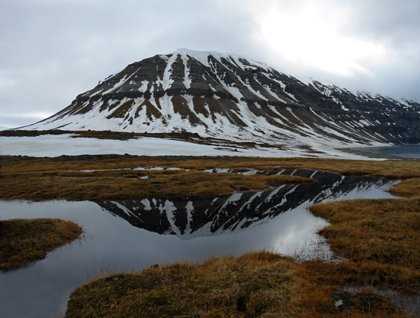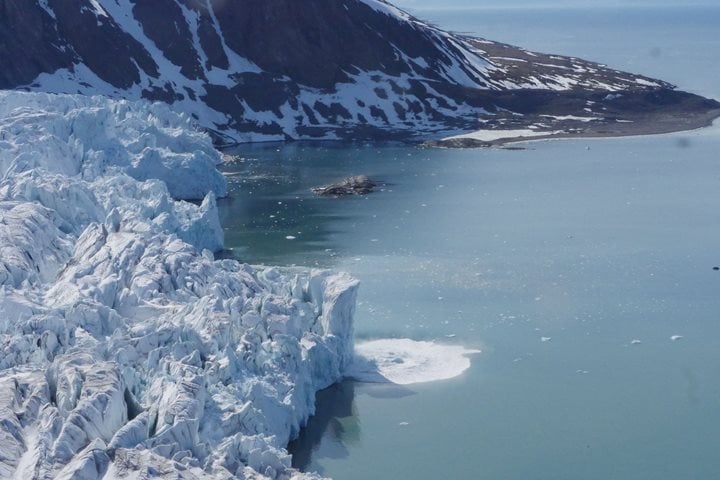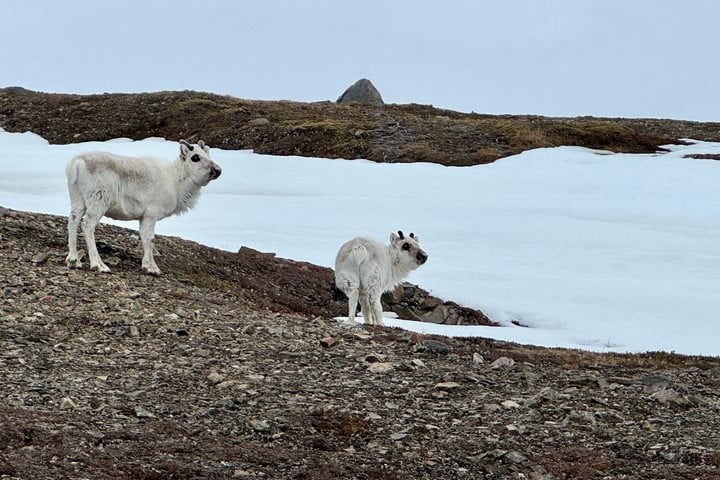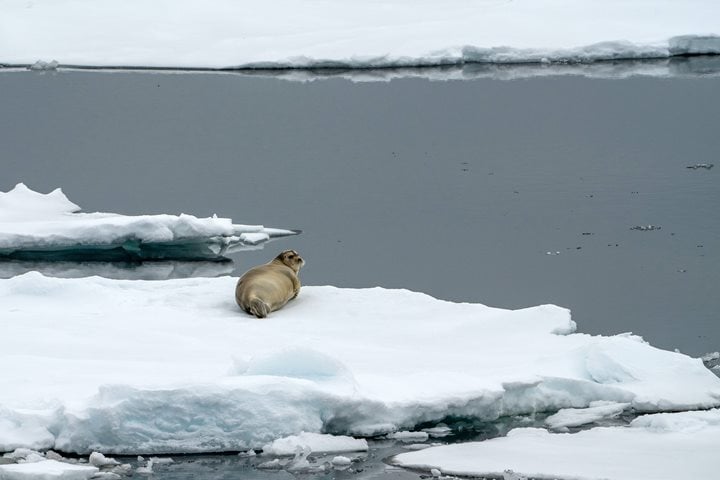At 0700 hrs the temperature is 3 degrees Celsius and wind light to moderate.
Overnight we have sailed southward from the great ice face of Negribreen through Storfjorden, the “broad fjord.” As we approach Ärdalsnulten on southwesternmost Edgeøya, the water is steely-grey and small waves are reflecting the soft Arctic light. Edgeøya is named for the Englishman Thomas Edge who sailed here in 1616. Rising from the cold shore are ice-planed mountains formed of sedimentary rocks and rasped down to the same heights by glaciers; low broken clouds lie just above the mountains. Steep slopes plunge seaward, vertically eroded and corrugated with their grooves snow-filled. Through the horizontally layered sedimentary rocks a dark sill of doleritic rock runs like the filling in a sandwich. The sill formed as magma forced its way in between layers of older rocks and now, being harder than the sedimentary rocks, it stands out in relief on the slopes.
Our morning expeditions were hiking, kayaking, and Zodiac cruising. The hikers took a course across tundra newly exposed by the spring thaw—the snow and ice still lies in patches and only the earliest purple saxifrage and moss campion were seen in bloom. Many shallow ponds lay in our path and we splashed through them; they are prevented from draining as ice lies just below the ground surface. A calling red-throated loon circled above us in a flight display while strikingly white-and-black snow buntings fluttered across the landscape, perching on dark rocks and singing their musical and high-pitched songs. Meanwhile, Zodiac cruisers saw red phalaropes spinning about in the water, stirring up small morsels to eat as king eider ducks flew past. A much larger creature was sighted—the walrus, blowing and rolling in the sea and perhaps diving for clams. Kayakers launched their yellow craft and set out on the surprisingly calm sea. Many paddled over for a closer look at a beautifully pale-blue bergy bit—too small to be called an iceberg. Back on board some 44 intrepid souls took the Polar Plunge, jumping off the kayak platform into the icy (2.1 degrees Celsius) water.
Kenneth Monsen, naturalist, related his exciting story of a year as a trapper with his dog team in Svalbard for the afternoon presentation. Then we enjoyed wine and lobster tacos on the “sun” deck, although we were bundled up in coats and did not see the sun, as National Geographic Explorer made her way into broken-up pack ice on yet another search for the great Ice Bear.







